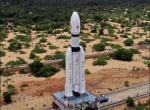For a country that was badly in need of a good news, the spectacularly successful launch of India’s Mars Orbiter Mission Mangalyaan on Nov.5 came as a heart warming development that overwhelmed Indians with a sense of ”joy and pride” .
The hoisting of the 1340-kg Indian Mars orbiter into a precise near earth orbit by means of an augmented version of the reliable , four stage Indian space workhorse, Polar Satellite Launch Vehicle(PSLV) not only marked a big leap ahead for the Indian space programme but also catapulted India into the ranks of the select galaxy of advanced space faring nations. Indeed, this first ever Indian interplanetary mission is being envisaged as a stepping stone for India’s deeper forays into outer space in the years ahead, in keeping with India’s ambition of emerging as a technological power house of global standing.
Rightly, as pointed out by K.Kasturirangan, a former Chairman of the Indian Space Research Organisation(ISRO), Mangalyaan will be a key milestone for the Indian space programme that would also boost India’s credentials to join the future international deep space missions not only to Mars but also to other planets of the solar system. By all means, Mangalyaan is the most complex and challenging space mission ever tried out by the Indian space agency.
Indeed, the accomplishment of Mangalyaan mission in a record period of around thirty months and that too within a limited budget is one more striking instance of the “Indian space success story on a shoe string budget.” As stated by ISRO Chairman, K.Radhakrishnan, “The worth of a nation is defined by the dreams it dares to dream. ISRO dreamt a dream and made it real”. On their part, Western aerospace analysts have not minced words in describing Mangalyaan as a vibrant symbol of India’s growing prowess in space exploration. Across the world, there is a growing realization of the long strides made by India in high technology areas and the successful launch of Mangalyaan has only gone to strengthen this impression.
Considered a natural follow on to India’s highly successful maiden lunar mission Chandrayaan-1 launched in Oct 2008, Mangalyaan has helped ISRO develop a number of new and novel technologies involved in the design, planning, management and operation of interplanetary missions. These technologies will stand ISRO in good stead while launching probes to Venus and inner asteroid belt in the years ahead. Moreover, the spin offs of the strategic technologies developed for interplanetary missions have many potential civilian applications which the Indian industry can exploit for the benefit of the country. On another front, the Indian Mars mission has all the potentials to fire the scientific imagination of the young Indian minds keen on pursuing frontier research that could also result in the development of cutting edge technologies that no country is willing to sell or share. Indeed, for a country that commenced its space journey in a very humble way with the launching of a nine kg. sounding rocket from a facility in the fishing hamlet of Thumba near to Thiruvananthapuram, the slingshot to Mars that would involve an epic trek of Mangalyaan spacecraft covering a distance of about 400-million kms in 300 days is as exciting as it is spectacular.
There is no denying the point that Mangalyaan with a price tag of Rs.4500-million is the cheapest ever ticket to Mars. The cost of Mangalyaan is said to be one tenth of what USA has spent on its latest mission to Mars, MAVEN (Mars Atmosphere and Violet Evolution) which is all poised for its celestial journey. Innovation, indigenisation and frugal engineering are considered the secret of India’s low cost space missions. For instance, Jeffrey Plescia, a researcher at Johns Hopkins University in USA says that the cost of Indian Mars mission is less than 0.1% of India’s annual budget. ISRO has spent just about 5% of its annual budget on the Mars mission. Significantly, the widely respected British aerospace magazine, Flight International comments, “Remarkably, ISRO has spent a mere $ 75-million on the Mangalyaan mission, an astoundingly small budget for a project so complex. By comparison, Alfonso Cuaron’s acclaimed 2013 space epic, Gravity, starring Sandra Bullock and George Clooney was made at an estimated budget of $100-million”.
As expected, there has been trenchant criticism of the Indian Mars mission based on the argument that a country of India’s standing with the problem of widespread poverty and backwardness on hand, should not have a costly and high profile planetary mission as its priority area. However, such an argument has not found many buyers in the country. For space technology too can contribute to the advancement of the community in tandem with socio economic measures at the ground level. Stating that the Indian space programme is overwhelmingly people centric, Radhakrishnan drove home the point that” there is no question of wrong priority .In fact, this is the right priority. We have benefited the grass root level people in the country.”Indeed, the thrust of India’s INSAT communications and IRS earth observation spacecraft constellations being operated by ISRO is on diffusing the fruit of space technology into the mainstream of national development.
From aiding agriculture to disaster warning as well as supporting education and health to mapping natural resources and providing instant communications links in disaster hit areas, these two satellite constellations continue to play a stellar role in the all round development of the country. In fact, the massive evacuation of people along the coastline of Odisha and Andhra Pradesh in October this year that saved human lives in thousands is a tribute to the early warning on the movement of devastating cyclone Phailin that the weather watch satellites in INSAT constellation made available to the India Meteorological Department(IMD). This is but just an example of how space technology is benefiting the nation. “Our three satellites have helped evacuate people in Odisha and Andhra Pradesh during the recent cyclones. You can see our satellites have been put to use in many such instances”, noted Radhakrishnan.
Indeed, right since inception, the focus of the Indian space programme has been on exploiting the potentials of space technology for speeding up the socio economic development of the country. Radhakrishnan has been quick to observe that while looking at the stars, ISRO has firmly been rooted in the ground.
A section of western analysts have also projected the view that Indian Mars mission is a symbol of India’s overriding ambition to attain a super power status. India, like other space faring countries has every right to project is prowess in outer space in a peaceful manner. To work towards attaining the status of a super power is a prerogative of a sovereign, independent country. Moreover, India which lost the “Industrial revolution “ bus as a nation under foreign rule, cannot afford to remain stagnant in so far as the exploration of the final frontiers is concerned. Indeed an interplanetary probe like Mangalyaan is vital to affirm India’s leadership position in outer space. USA was able to attain an unprecedented level of industrial and technological growth because of the massive investment it made on the basic science research.
As noted by Prof U R Rao, a former ISRO Chairman, just as India’s Chandrayaan-1 made research history with the discovery of water on the moon, Mangalyaan too can come out with something new about the Red Planet, many aspects of which continue to remain shrouded in mystery.” We may have something to say about the presence of methane in the Red Planet and where it comes from. That may give us indications of any form of life at all on the planet”, noted Prof.Rao, Going ahead, he expressed the view that Mangalyaan has also the potential for the advancement of science and technology in the country.
The successful accomplishment of the mission to the Red Planet will make ISRO the fourth space agency in the world to pull off this distinction. So far, only National Aeronautics and Space Administration (NASA) of USA, Roscosmos of Russia and European Space Agency (ESA) have logged successful missions to the Red Planet. Interestingly, around half of more than 50 missions launched so far to Mars have ended up in failure. And in Asia, success has eluded Martian probes sent by both China and Japan, the space front runners in the continent. As such, there is a perception that in the area of exploring Mars through a robotic probe, India is keen on assuming a leadership position in Asia. However, ISRO has repeatedly denied the suggestion that it is in race with other space faring countries. It was during his Independence Day speech on August 15,2012 that the Indian Prime Minister Manmohan Singh made an announcement of the Indian mission to Mars, saying that it will mark a huge step forward in the area of science and technology. “If it succeeds, Indian Mars mission would represent technological leap for this South Asian nation, pushing it ahead of its space rivals, in the field of planetary exploration,” said Wall Street Journal.
Of course, as pointed out by ISRO, the primary driving technological objective of the mission is to design and realize a spacecraft which can reach Martian transfer trajectory, orbit around Mars to study its atmosphere and map minerals while looking for signs of methane. ISRO feels that MOM is a logical extension Chandrayaan-1 mission . But then in contrast to Chandrayaan-1, mission to the Red Planet involves a longer flight and an altogether different trajectory involving a lot of hurdles on the way. According to M.Annadurai who is currently programme Director for Indian Remote Sensing, Small, Science and Student Satellites at ISRO Satellite Centre in Bangalore, “it provides us with opportunity to test technologies like spacecraft autonomy, long distance space communications, interplanetary navigation and miniaturized space payloads and systems.”Annadurai provided leadership to the team that realized India’s Chandrayaan-1 mission. Evidently, ISRO chose a Martian mission since there are several similarities between the earth and Mars. They include soil surface, seasons, the duration of their days and the polar ice caps.
The Indian Mars probe carries five scientific instruments with a total weight of 15-kg to study the various aspects and features of the Red Planet. All these instruments were designed and developed within the country. According to Radhakrishnan ”It has a colour camera for optical imaging of the planet’s surface, a methane sensor to monitor the presence of methane in Martian atmosphere, a thermal infrared camera to study the geological features, a Lyman Alpha Photometer to study the Martian atmosphere and a payload to study the neutral composition of the planet’s upper atmosphere.” As envisaged now, Mangalyaan is expected to help ISRO generate a first ever comprehensive map of the Red Planet. Rightly, ISRO considers the Mars mission as a symbol of India’s assured access to space.
The importance of Mars to earthlings stems from the fact that many researchers believe that Mars could be the next outpost for the human civilization to flourish in our solar system. According to Prof Rao, the Red Planet holds a great potential and relevance to earthlings. For in “about 500 years or so we might be able to use Mars as a resources base for earth”. Observes Rao, “We are running out of resources in the world. There are many people who believe Mars can be made hospitable and of course it requires a lot of efforts.” Former Indian President and internationally recognised space scientist Dr.A.P.J.Abdul Kalam has made an impassioned plea for a well organised international collaboration to give a practical shape to the human dream of colonizing Mars in the future.
Significantly, ISRO researchers behind the Mars Orbiter Project did carefully study the failures and successes of the various missions to Mars before arriving at the spacecraft configuration and mission profile. It may be recalled that Russia’s Phobos Grunt mission to Mars that also carried a Chinese probe named Yinghuo-1 launched in Nov.2011 came cropper after the spacecraft failed to leave earth’s orbit and crashed back earth in early 2012. This mission was meant to collect the soil samples from the Martian moon Phobos and send them back to earth in a return capsule .Similarly the Japanese mission to Mars, Nozomi launched in July 1998 had, on account of a mechanical hitch, gone into a wrong trajectory and failed to reach Mars.
One of the key areas of research that many Mars probes have focussed on so far is the possibility of the existence of methane whose presence could point out to the planet having supported primitive life forms .As it is, the American Curiosity rover to Mars could hardly find credible evidence for the presence of methane on Mars. “We will be looking at Mars differently from what Curiosity has done. There can be new findings or confirmation of findings,” says S.K.Shivakumar, Director of ISRO Satellite Centre in Bangalore. Significantly, the American MAVEN probe which will study the atmosphere of Mars is expected to share synergy with India’s Mars mission. The sensors of both these missions will probe and analyse the dynamics of the process that resulted in the thinning of the Martian atmosphere. ”There are some overlapping objectives and at the point we are both in-orbit collecting data, we plan to work together with the data, “says Radhakrishnan.
Both India’s Mangalyaan and MAVEN spacecraft will join earth’s armada of five operational obiter and surface rovers currently exploring the Red Planet. “If all goes well, NASA’s MAVEN orbiter and Indian MOM will work together to help solve the mysteries of Mars atmosphere. We plan to collaborate on same overlapping objectives,” says Bruce Jakosky, MAVEN’s principal investigator from the University of Colorado.
Perhaps the most challenging scientific objectives of the Indian Mars probe would be finding clues for the existence of methane on the Mars. Further, the Indian Mars mission will help answer questions such as whether Mars ever had an environment in which life evolved in addition to studying the surface topography, mineral resources and microbiology and atmosphere of the Red Planet Everything going as planned, Mangalyaan will reach its final orbit around the Mars in September next .The five scientific payloads on-board the spacecraft would actively explore Mars from this position in a variety of angles for about six months.
Meanwhile, ISRO is aware that it cannot rest on its laurels. For the Mangalyaan happens to be just the beginning of a long, challenging journey into the mind boggling expanse of outer space, a large part of which remains unexplored. The philosophy that “not even the sky is the limit” continues to propel ISRO for “deeper and wider’ forays into the final frontiers. And for India, the continuing space conquest by ISRO happens to be the brightest part of its history.
Published Date: 20th November 2013, Image source: http://www.blogcdn.com







Post new comment